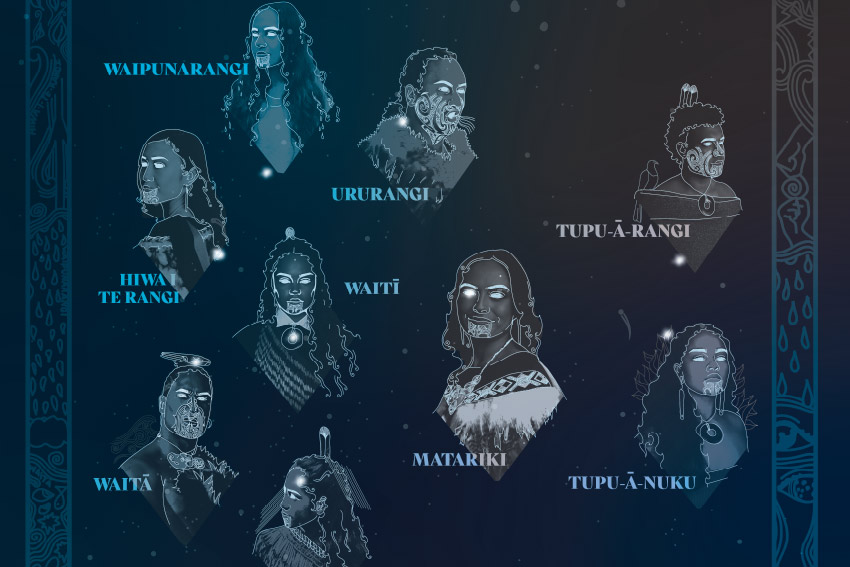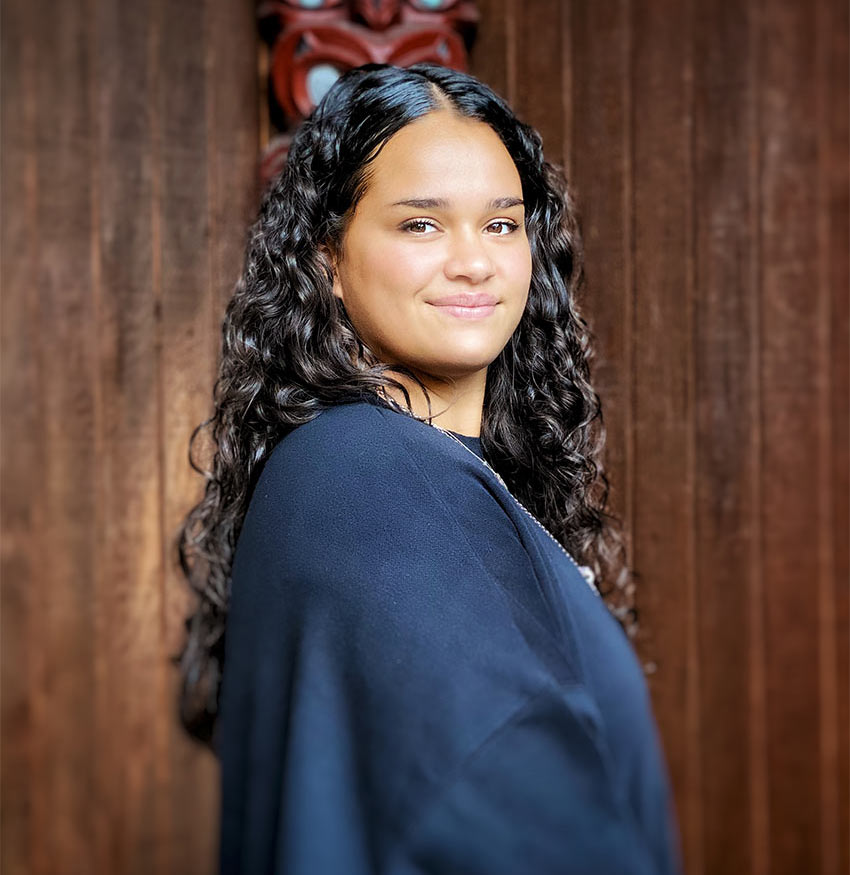Matariki artworks a koha to all

To celebrate the rise of Matariki, Te Tari Takawaenga Māori at AUT has commissioned a collection of artworks by Te Tohu Paetahi mō te Hoahoa - Bachelor of Design in Communication Design and te reo Māori student Hāriata Mann.
The works, available to all under a creative commons licence, depict the nine whētu of Matariki, a map of the star cluster, and a Matariki sign.
They were commissioned as a koha to celebrate the beginning of the new year in te aō Māori, when Matariki first rises on the eastern horizon just before dawn, says Kaitakawaenga Māori at Te Tari Takawaenga, Jana Nee.
“This is the second year Te Tari Takawaenga Māori has commissioned a student to design the posters,” Jana says.
“The idea came from a desire to provide a learning experience for AUT students that is embedded in te ao Māori.”
Jana says that asking a different student to depict the nine whetū of Matariki through their own eyes each year demonstrates the many ways they can be imagined.
“We felt that changing the design annually would nicely signify the changing forecast of the cluster each new year.”
Artist Hāriata Mann (Ngāi Tuhoe, Ngāti Kahungungu ki te Wairoa) says the works showcase the beautiful spirit and ancestry of Matariki.
“Each whētu is encased in a border which, starting from the top left corner, tells one origin story of the cluster,” Hāriata says. “The imagery illustrates Tāwhirimātea, who threw his eyes to the sky in anguish of his siblings' decision to split Papatūānuku and Ranginui.”
Māori author and illustrator Gavin Bishop influenced these borders, Hāriata says: “I believe his inspiration is what gives these posters warmth.
“Another artist that I was inspired by was the beautiful mana wahine and friend Bronwyn Waipuka, whose simple yet stunning illustration style inspired the illustrations of the whetū faces.”
Hāriata says it was a joy to work on the artworks, despite facing “some obstacles”, while juggling mahi and whānau commitments: “I am extremely grateful for this opportunity that I have been given. And I hope these posters are loved and used well.”
The art resource pack contains 11 full colour posters, with wallpaper variations for desktop.
This is the first year Te Tari Takawaenga is also gifting the artwork as a downloadable print, Jana Nee says.
“Matariki is for everyone, it is a time for reflection and aspiration, and we wanted to share this with community, hapori and iwi.
“There is so much to be learnt from mātauranga Māori regardless of your cultural background. We encourage whānau and friends to download the posters and display them in workspaces, homes and schools.”
The artworks are licensed under a Creative Commons Attribution-NonCommercial-NoDerivatives 4.0 International License.
This license allows anyone to use the work for non-commercial purposes, as long as the artist is credited.
How to credit these artworks
- This artwork is licensed under a Creative Commons Attribution-NonCommercial-NoDerivatives 4.0 International License
- The artworks may be downloaded and shared
- You must give appropriate credit, by mention of the artist, Hāriata Mann. If sharing on social media, please tag @autmaori for the credit
- You may not use the material for commercial purposes
- If you remix, transform, or build upon the material, you may not distribute the modified material
- You may not apply legal terms or technological measures that legally restrict others from doing anything the license permits
If you have any questions about the use of this work, please email maori@aut.ac.nz.
Artist bio
Ko Panekiri me tukurangi ōku Maunga
Ko Waiau me Waikaretaheke ōku awa
Ko Waikaremoana tōku roto
Ko Kahungunu tōku tīpuna
Ko Mataatua me Takitimu ōku waka
Ko Te Kuha Tarewa me Rangiahua ōku marae
Ko Tama-te-Ranhi me Ruapani ōku hapu
Ko Ngāi Tūhoe me Ngāti Kahungungu ki te Wairoa ōku iwi.
Ko Bart Mann me Louise Mann ōku Matua
Ko Hāriata Louise Mann ahau

Hāriata Mann, 19, was born and raised in West Auckland. It was not until she went to high school, at Te Puna ō Wairaka - Mount Albert Grammar, that she was inspired by kaiako Whaea Miri and Matua Pete to fall in love with te ao Māori. “I began to see, acknowledge and understand the beautiful culture that is Māori because of their guidance,” she says. “Now I stand strong in my Māoritanga and it helps me with all paths I decide to take - especially in my art and design.” Hāriata is a second-year Te Tohu Paetahi mō te Hoahoa - Bachelor of Design student at AUT, majoring in communication design. Her minor is in te re Māori.
Useful links